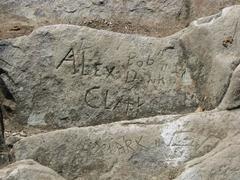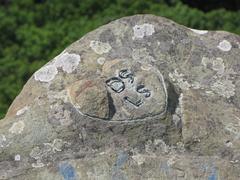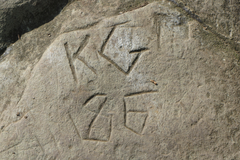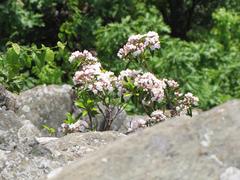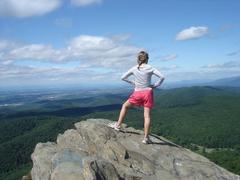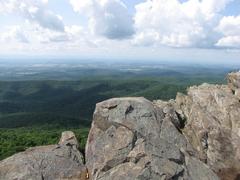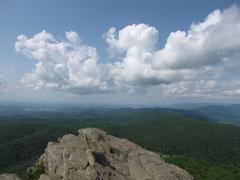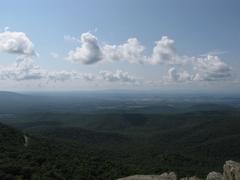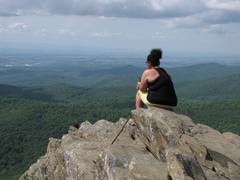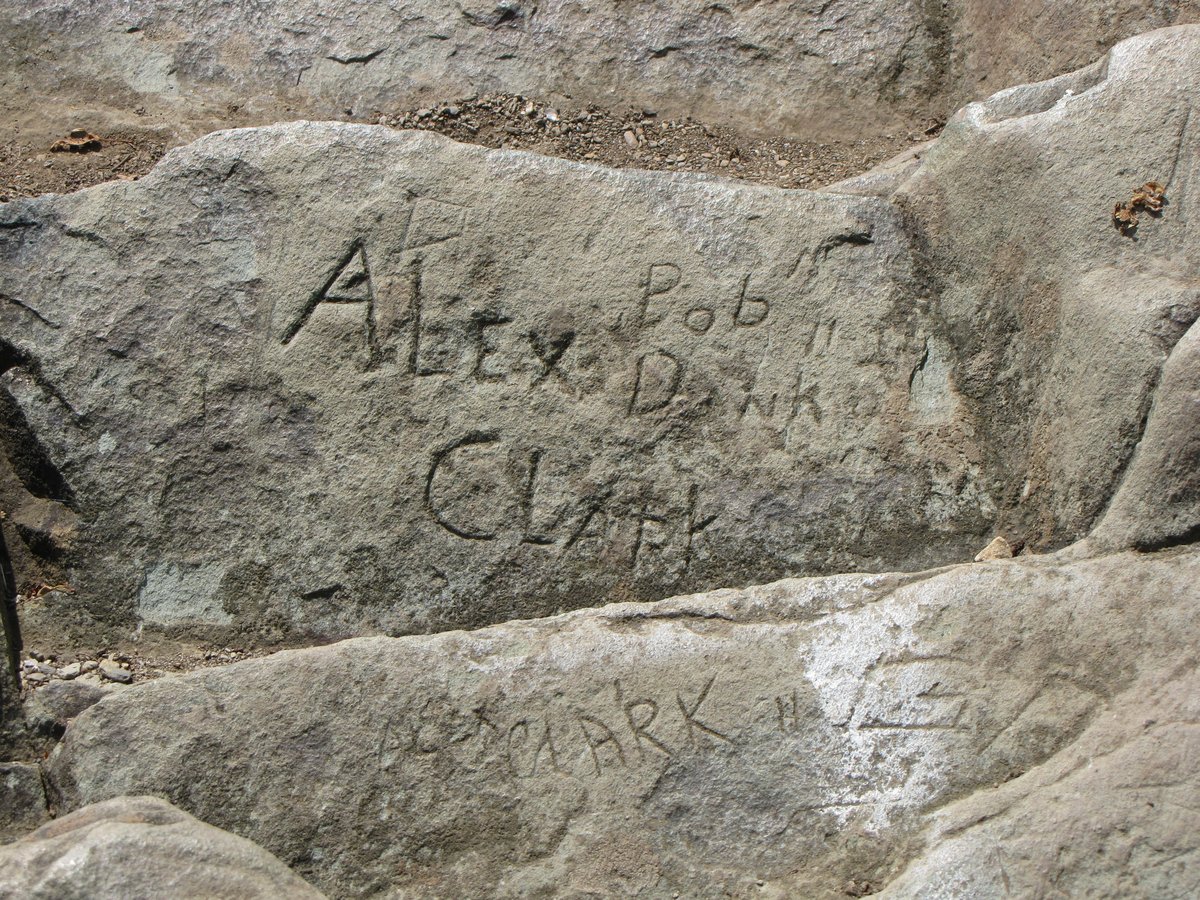
Guide to Visiting Humpback Rock in Lyndhurst, United States
Date: 17/08/2024
Introduction
Nestled in the heart of the Blue Ridge Mountains, Humpback Rock is a captivating destination that offers a unique blend of natural splendor and historical intrigue. This iconic landmark, located along the Blue Ridge Parkway in Lyndhurst, Virginia, provides visitors with an opportunity to explore the rich cultural heritage of the Appalachian region while enjoying breathtaking vistas and challenging hiking trails. The area is steeped in history, dating back to early European settlers who utilized the abundant natural resources to forge a self-sufficient lifestyle. From the significant role of the Howardsville Turnpike to the geological marvels formed over a billion years ago, Humpback Rock is more than just a scenic spot; it is a gateway to understanding the past (Blue Ridge Parkway, Wikipedia).
Whether you’re a history buff, a nature enthusiast, or simply seeking a picturesque escape, this comprehensive guide will equip you with all the essential information needed to make the most of your visit to Humpback Rock. From historical insights and trail details to visitor tips and nearby attractions, this guide is your go-to resource for an enriching and memorable experience (National Park Service, Go Hike Virginia).
Table of Contents
- Introduction
- Historical Significance
- Visitor Information
- Nearby Attractions
- Outdoor Farm Museum
- 19th Century Carvings
- The Humpback Rocks Visitor Center
- The Impact of Railroads
- Preservation and Modern-Day Significance
- Visitor Tips
- FAQ
- Conclusion
Historical Significance
Early European Settlers and Self-Sufficient Farms
Humpback Rock is not only a natural marvel but also a site rich in historical significance. Early European settlers in the Appalachian Mountains utilized the abundant natural resources to forge a self-sufficient lifestyle. Hickory, chestnut, and oak trees provided essential materials such as nuts for food, logs for building, and tannin for curing hides. Rocks from the area were used as foundations and chimneys for houses and in stone fences to control livestock (Blue Ridge Parkway).
The Howardsville Turnpike and Humpback Gap Overlook
From 1851 until the early 20th century, the Howardsville Turnpike was a crucial route for wagoners hauling cargo between Howardsville and the Shenandoah Valley. Humpback Gap, a notable camping spot for these travelers, is part of the 795-acre Humpback Rocks Recreation Area. The rock fence at Humpback Gap, reputedly built by slaves of a plantation owner, separates the gap and Greenstone Overlook (Wikipedia).
The Role of Humpback Rock in Navigation
Humpback Rock served as a landmark for wagon trains traveling along the Howardsville Turnpike in the 1840s. This prominent rock outcrop guided travelers over the narrow Blue Ridge until the advent of railroads, which provided a more efficient means of crossing the mountains. A portion of the historic trace of the Howardsville Turnpike still exists today, offering a glimpse into the past (Blue Ridge Parkway).
Geological Formation and Historical Context
The geological history of Humpback Rock is as fascinating as its human history. The rock is underlain by an enormous granite formation created during the Grenville Orogeny about a billion years ago. Approximately 400 million years later, basaltic magma was deposited, forming a layer of greenstone over the granite. Over time, sedimentation of sand, rock, and organic materials resulted in the formation of quartzite, sandstone, and limestone deposits. The closing of the Iapetus Ocean around 700 million years ago led to the Alleghenian Orogeny, during which slabs of granite and rock were thrust up over the limestone bed, forming Humpback Rock and the Blue Ridge Mountains (Wikipedia).
Visitor Information
Humpback Rock Visiting Hours
The Humpback Rocks Visitor Center is open seasonally from April through October, typically from 9:00 AM to 5:00 PM. The hiking trails and outdoor farm museum are open year-round from sunrise to sunset. Please check the National Park Service for the most current visiting hours.
Tickets and Accessibility
Access to Humpback Rock and its trails is free of charge. The Humpback Rocks Visitor Center also offers free entry. However, donations are welcome to support preservation efforts. The site is partially accessible, with some areas like the farm museum being more accessible than the hiking trails, which can be steep and rocky.
Special Events and Guided Tours
Throughout the year, the Blue Ridge Parkway hosts various events and guided tours at Humpback Rock. These may include historical reenactments, nature walks, and educational programs. Check the Blue Ridge Parkway website for upcoming events and tour schedules.
Nearby Attractions
Exploring the Blue Ridge Mountains offers numerous other attractions. Nearby sites include:
- Skyline Drive: A scenic drive offering breathtaking views of the Shenandoah Valley.
- Crabtree Falls: One of the tallest sets of waterfalls east of the Mississippi River.
- Appalachian Trail: Accessible from various points, including Humpback Rock.
- Monticello: The historic home of Thomas Jefferson, located in Charlottesville, VA.
Outdoor Farm Museum
Adjacent to the Humpback Rocks Visitor Center is an outdoor farm museum that showcases the lifestyle of early European settlers. The museum is surrounded by nearly 3,000 acres of predominantly forested lands. Early Parkway designers collected buildings from nearby areas and assembled them here, allowing visitors to stroll along pathways and explore 19th-century farm buildings (Blue Ridge Parkway).
19th Century Carvings
When visiting Humpback Rock, one can find carvings in the stone made by members of two local families in 1875 and 1894. These carvings serve as touchstones to a distant past, offering a tangible connection to the people who once traversed and lived in this area. However, they also raise questions about the impact of human activity on natural landscapes (National Park Service).
The Humpback Rocks Visitor Center
The Humpback Rocks Visitor Center, located at Milepost 5.8 on the Blue Ridge Parkway, offers exhibits and information about the area’s natural and cultural history. Visitors can tour a collection of 19th-century farm buildings via the Mountain Farm Trail, providing a comprehensive understanding of the early European settlers’ way of life (Virtual Blue Ridge).
The Impact of Railroads
The construction of railroads through the mountain gaps in the late 19th and early 20th centuries marked a significant shift in transportation and commerce in the region. The railroads provided a more efficient means of crossing the Blue Ridge Mountains, reducing the reliance on routes like the Howardsville Turnpike. This development played a crucial role in the economic growth and modernization of the area (Blue Ridge Parkway).
Preservation and Modern-Day Significance
Today, Humpback Rock is preserved as part of the Blue Ridge Parkway, a testament to its historical and natural significance. The area offers a blend of natural beauty and cultural history, making it a popular destination for hikers, history enthusiasts, and nature lovers alike. The preservation efforts ensure that future generations can continue to explore and appreciate this unique landmark (National Park Service).
Visitor Tips
For those planning to visit Humpback Rock, it is essential to be prepared for a steep and rocky hike. The most-trafficked route to the top is barely one mile but involves an elevation gain of 700 feet. Visitors can choose from various hiking options, including a 2.0-mile out-and-back hike, a 4.3-mile loop hike, or a longer 6.6-mile out-and-back hike that traverses the Appalachian Trail. The trail is marked with a blue blaze, and it is crucial to stay on the designated path to prevent erosion and other environmental impacts (Go Hike Virginia). Best times to visit are during the spring and fall when the weather is mild, and the foliage is at its most vibrant. Be sure to wear sturdy hiking boots, bring plenty of water, and check the weather forecast before heading out.
FAQ
What are the visiting hours for Humpback Rock?
The Humpback Rocks Visitor Center is open seasonally from April through October, typically from 9:00 AM to 5:00 PM. The hiking trails and outdoor farm museum are open year-round from sunrise to sunset.
Are there any entrance fees?
Access to Humpback Rock and its trails is free of charge. However, donations are welcome to support preservation efforts.
Is Humpback Rock accessible?
The site is partially accessible, with some areas like the farm museum being more accessible than the hiking trails, which can be steep and rocky.
What nearby attractions can I visit?
Nearby attractions include Skyline Drive, Crabtree Falls, the Appalachian Trail, and Thomas Jefferson’s Monticello.
What is the best hike at Humpback Rock?
The most popular hike is the 2.0-mile out-and-back trail to the summit, offering stunning views and a challenging yet rewarding experience.
Can I bring pets to Humpback Rock?
Yes, pets are allowed but must be kept on a leash at all times. Be mindful of the steep and rocky terrain, which may be challenging for some pets.
Conclusion
In summary, Humpback Rock stands as a testament to the rich history and natural beauty of the Blue Ridge Mountains. With its challenging hiking trails, historical landmarks, and panoramic views, it offers a diverse array of experiences for visitors of all interests. The area’s preservation as part of the Blue Ridge Parkway ensures that future generations can continue to explore and appreciate its unique blend of natural and cultural heritage (Blue Ridge Parkway, National Park Service).
By following the provided visitor tips and being well-prepared, you can fully immerse yourself in the captivating history and stunning landscapes that Humpback Rock has to offer. Whether you’re hiking to the summit, exploring the outdoor farm museum, or participating in guided tours, every visit to Humpback Rock promises to be a rewarding adventure. For more information and updates, be sure to visit the official websites and follow on social media, ensuring you stay informed about all the exciting activities and events at this remarkable destination (Go Hike Virginia, Expert Explorers).
References
- Blue Ridge Parkway. (n.d.). Humpback Rocks source
- Wikipedia. (n.d.). Humpback Rock source
- National Park Service. (n.d.). Humpback Rocks Hike source
- Go Hike Virginia. (n.d.). Humpback Rocks source
- Expert Explorers. (n.d.). Humpback Rocks Trail Blue Ridge Parkway source
- Hiking Upward. (n.d.). Humpback Rocks source
- Nelson County. (n.d.). Explore Humpback Rocks source
- Visit Staunton. (n.d.). Humpback Rocks source
- NPS. (n.d.). Humpback Rocks Trailhead source
- Virtual Blue Ridge. (n.d.). Humpback Rocks source
